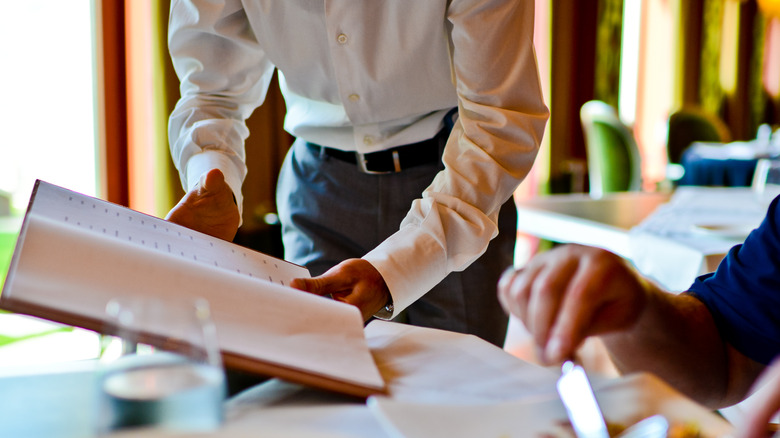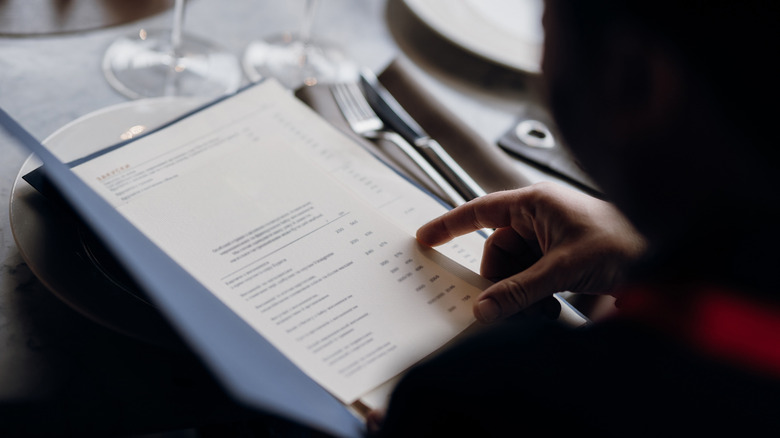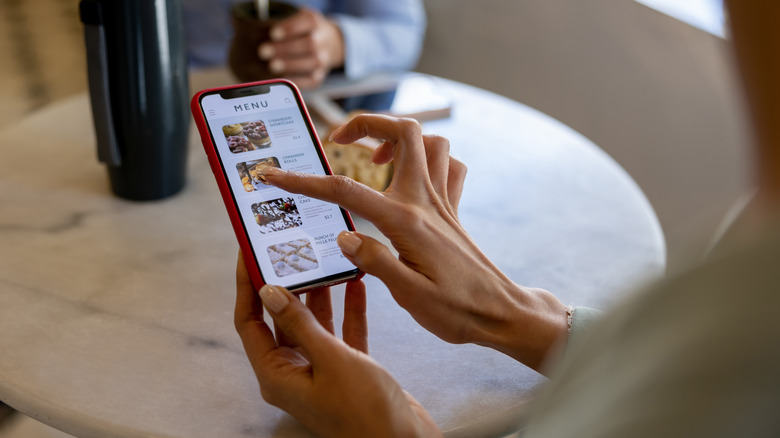The Psychological Trick Restaurants Use To Make You Spend More Money
When you sit down at a restaurant, there is a lot of diversion. The hustle and bustle of diners, the conversation with friends and loved ones at your table, the servers hovering to attend to you — and that doesn't even cover the culinary choices you have to make. Pick a drink, pick an appetizer, pick an entree, and pick a dessert. That's a lot of choices to make. But is it really? Restaurant menus aren't just designed to be attractive or to get all of the details down on the page; many of them are carefully curated to start making those choices for you.
The customer and their cognitive tendencies steer restaurant menu design, so restaurants often employ some psychological tricks on their menus to draw your attention to certain dishes. This may involve using flowery words to spark your imagination, certain colors to influence your mood, shapes to draw your eye, or even including a particular number of dishes to avoid overwhelming guests. Many times, though, it's even simpler than that — because the order and placement of the choices matter. More often than not, you'll find the most expensive or most profitable dishes at the top or the bottom of a list. Such a simple design rule works because of cognitive biases called the primacy and recency effects.
The effect of primacy and recency in persuasion
As the names of these biases imply, the primacy and recency effects (which are collectively two parts of the serial position effect) are all about the order in which menu items appear. In the most simple terms, people tend to remember and often order the menu items that appear at the beginning of a section or list and at the end of a section or list. The first list items are processed and stored by long-term memory, and the end of a list relies on short-term memory. But as our brain processes the series, the stuff in the middle will often get forgotten — and thus, not ordered. So to take advantage of the way the human memory naturally works, restaurants will stick expensive dishes, or dishes with a higher profit margin, right up front or at the very end of a menu. As you glance through everything on offer, with friends' conversations in your ear and a waiter waiting nearby, you're more likely to remember what came first or what came last.
Of course, this doesn't just apply to sneaky tactics on restaurant menu prices, and it's hardly a modern phenomenon. As a result of his famous self-inflicted memory experiments, German psychologist Hermann Ebbinghaus first used the term "serial position effect" in 1885. Nowadays, sales and marketing both analog and digital (and across all kinds of industries) will influence what you remember, what you buy, and where you click by the positioning in a series or a section.
Comparison influences this choice, too
The positioning of expensive items at the top of a menu has another useful result — even if you overcome the primacy effect and turn your focus to the dishes further down on the list, they can look cheaper by comparison. Starting off with the highest-priced food can make still-expensive-but-less-expensive dishes look like you're getting a bargain. Sometimes, these expensive dishes at the top are decoys (specifically overpriced to the point that you're not expected to actually order them), and sometimes they just function as a contrast to put other dishes' prices in perspective.
When you sit down at a restaurant, you may think that all you are ordering is a good meal. But you'll also find a little psychological maneuvering on the menu too, and you might be reading the restaurant menu wrong. It doesn't mean that what you end up eating won't be delicious or even won't be the best option — it just means that the choice might not have been entirely your own. The owners, managers, and designers are tapping into your subconscious to influence the food that ends up on your plate (and on your bill).


